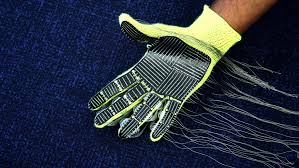
Breaking News
 How To Become Competent, Confident, and Dangerous, with guest Doug Casey
How To Become Competent, Confident, and Dangerous, with guest Doug Casey
 My Hot Take On Bill Gates' Climate Change Essay | Alex Epstein #457 | The Way I Heard It
My Hot Take On Bill Gates' Climate Change Essay | Alex Epstein #457 | The Way I Heard It
 Discussion on Covid Vaccination Should Be Non-Controversial
Discussion on Covid Vaccination Should Be Non-Controversial
Top Tech News
 HUGE 32kWh LiFePO4 DIY Battery w/ 628Ah Cells! 90 Minute Build
HUGE 32kWh LiFePO4 DIY Battery w/ 628Ah Cells! 90 Minute Build
 What Has Bitcoin Become 17 Years After Satoshi Nakamoto Published The Whitepaper?
What Has Bitcoin Become 17 Years After Satoshi Nakamoto Published The Whitepaper?
 Japan just injected artificial blood into a human. No blood type needed. No refrigeration.
Japan just injected artificial blood into a human. No blood type needed. No refrigeration.
 The 6 Best LLM Tools To Run Models Locally
The 6 Best LLM Tools To Run Models Locally
 Testing My First Sodium-Ion Solar Battery
Testing My First Sodium-Ion Solar Battery
 A man once paralyzed from the waist down now stands on his own, not with machines or wires,...
A man once paralyzed from the waist down now stands on his own, not with machines or wires,...
 Review: Thumb-sized thermal camera turns your phone into a smart tool
Review: Thumb-sized thermal camera turns your phone into a smart tool
 Army To Bring Nuclear Microreactors To Its Bases By 2028
Army To Bring Nuclear Microreactors To Its Bases By 2028
 Nissan Says It's On Track For Solid-State Batteries That Double EV Range By 2028
Nissan Says It's On Track For Solid-State Batteries That Double EV Range By 2028
Low-cost sensor glove could lead to robots that identify objects by touch

Called the Scalable TActile Glove (STAG), it uses 550 tiny pressure sensors to generate patterns that could be used to create improved robotic manipulators and prosthetic hands.
If you've ever fumbled in the dark for your glasses or your phone, then you know that humans are very good at figuring out what an object is just by touch. It's an extremely valuable ability and one that roboticists and engineers would love to emulate. If that was possible, then robots could have much more dexterous manipulators and prosthetic hands could be much more lifelike and useful.
One way of doing this is to gather as much information as possible about how humans are actually able to identify by touch. The reasoning is that if there are large enough databases, then machine learning could be brought to bear to perform analysis and deduce not only how a human hand can identify something, but also to estimate its weight – something robots and prosthetic limbs have trouble doing.

 Dark Tidings
Dark Tidings Carbon based computers that run on iron
Carbon based computers that run on iron

